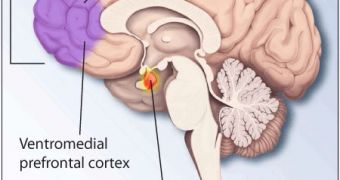The Post-traumatic Stress Disorder (PTSD) is one of the modern diseases that are on the rise across the world. Known in the First World War as “shell shock,” its name has changed over the years, but its symptoms have always remained the same. Diagnosing it correctly is very difficult to do, even with the modern imaging techniques that we have at our disposal today, such as X-ray and CT scans, or magnetic resonance imaging (MRI). But a new trial study, conducted on 74 US war veterans, argues that an accurate diagnostics method may have just been found.
In charge of the new investigation have been scientists from the Minneapolis Veteran Affairs Medical Center, working together with colleagues from the University of Minnesota. The team proposes that advances in the non-invasive measurement technique known as magnetoencephalography (MEG) now make it apt for identifying the most common symptoms associated with PTSD.
The method relies on measuring the activity of magnetic fields generated in the human brain, and does so without experts having to implant electrodes or other similar devices in the cortex beforehand. Details of the work appear in the January 20 issue of the respected Journal of Neural Engineering.
“The excellent results obtained offer major promise for the usefulness of the synchronous neural interactions test for differential diagnosis as well as for monitoring disease progression and for evaluating the effects of psychological and/or drug treatments,” the team writes in the new paper. This investigation was based upon other MEG studies (published in September 2007), which show that conditions such as Alzheimer's Disease and multiple sclerosis (MS) can also be detected by analyzing the human brain's magnetic fields.
The research team also reveals in the paper accompanying the study that the accuracy rate for MEG investigations is well over 90 percent. This was proven as the method was used to separate PTSD patients from healthy control groups, by applying the synchronous neural interactions test. This method is based on analyzing the magnetic charges that are produced when neurons connect to each other, or “couple” together. Funding for this amazing research came partially from the US Department of Veterans Affairs.

 14 DAY TRIAL //
14 DAY TRIAL //